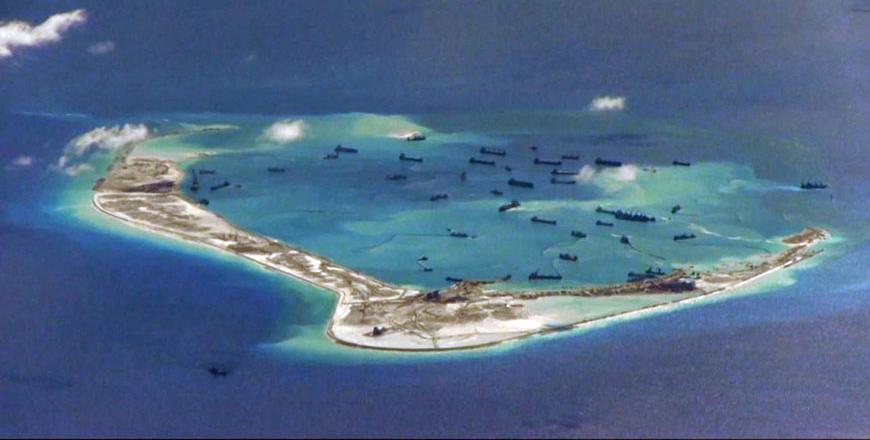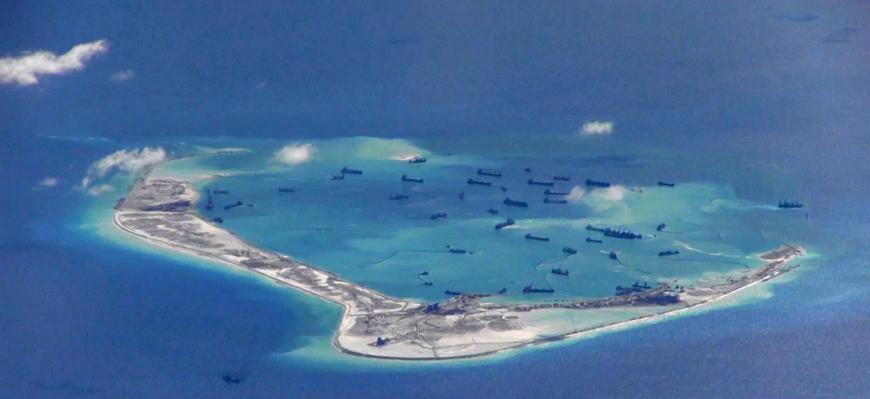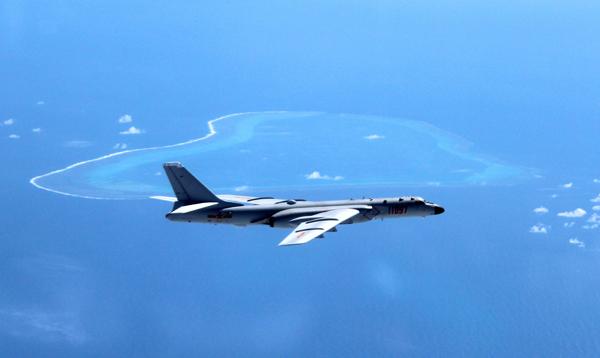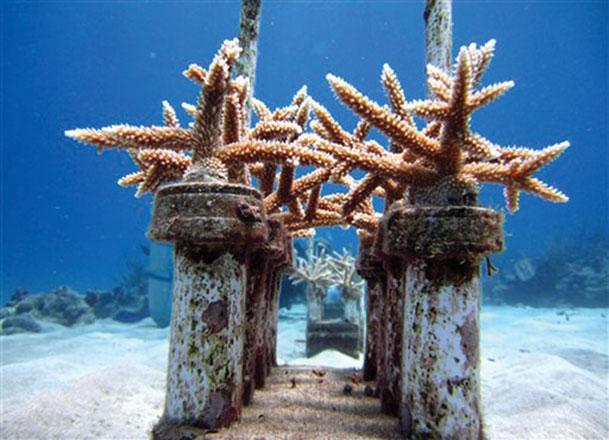You are here
Scientists alarmed over China island building in disputed sea
By Reuters - Jul 10,2015 - Last updated at Jul 10,2015

Chinese dredging vessels are purportedly seen in the waters around Mischief Reef in the disputed Spratly Islands in the South China Sea in this still image from video taken by a P-8A Poseidon surveillance aircraft provided by the United States Navy on May 21 (Reuters photo)
HONG KONG — Concern is mounting among some scientists that China’s reclamation work in the disputed Spratly archipelago of the South China Sea has done severe harm to one of the most important coral reef systems in Southeast Asia.
China’s use of dredged sand and coral to build artificial islands on seven reefs had also damaged reef systems beyond the outposts, meaning the affected area could be greater than first thought, several scientists who have studied satellite images of the Spratlys told Reuters.
Those concerns contrast with repeated official Chinese statements that Beijing is committed to protecting reefs and the broader marine environment in the South China Sea in keeping with its obligations under United Nations conventions.
John McManus, a prominent University of Miami marine biologist who has worked with Philippine scientists to research the South China Sea, told fellow experts this month that China’s reclamation “constitutes the most rapid rate of permanent loss of coral reef area in human history”.
Beyond the outposts, a wider area of reef had been destroyed by the dredging of sand from lagoons for use on the new islands and the dredging of shipping channels to access them, he wrote in an online oceanographic forum operated by the US National Oceanic and Atmospheric Administration, a federal agency.
McManus urged claimants to put aside their disputes and create a marine “peace park” to preserve what was left.
“I can’t help but use the phrase overused for forestry... they’ve paved paradise,” he said.
Most foreign criticism of China over its new islands has focused on the spike in tensions their creation has caused or the possible impact on freedom of navigation, especially since Beijing has said the outposts will have undefined military purposes.
Only the Philippines has publicly accused China of causing ecological damage. On Monday, Manila said China’s reclamation had caused annual economic losses of $281 million to regional coastal nations.
Asked to respond to the scientists’ concerns, China’s foreign ministry referred Reuters to a statement last week from the State Oceanic Administration, the maritime regulator, which said numerous environmental protection measures were in place.
“Impact on coral reef ecology is localised, temporary, controllable and restorable,” the agency said.
It did not respond to a request for further comment.
Biologically diverse
Chinese dredgers in the Spratlys have reclaimed some 8 square kilometres of land since reclamation began in late 2013, US officials say.
Other claimants, particularly Vietnam, have reclaimed land to support existing outposts or extend piers and runways but on a much smaller scale. The remaining claimants to the Spratlys waters are the Philippines, Malaysia, Taiwan and Brunei.
While the Spratly reefs are relatively small compared to major global reef systems, they are considered biologically diverse and could help propagate threatened coastal reefs with coral larvae and fish, scientists said.
They are also home to endangered sea creatures including giant clams, dugongs and several species of turtle.
In a study in April for Singapore’s S. Rajaratnam School of International Studies, marine science and law expert Youna Lyons found that beyond the seven reefs, other unoccupied shallow features had been dredged to provide building material for the nearby reclamations.
“Coral reefs that have been left untouched for centuries by virtue of their isolation are now gone,” Lyons wrote after research that included surveys of high-resolution satellite photographs.
Lyons, of the National University of Singapore, told Reuters this week that she had since seen further evidence of Chinese-style dredging on reefs away from the reclamations but wanted more detail on what was happening and who was behind it.
“The scale of the ongoing dredging of insular, uninhabited coral formations in the South China Sea is unprecedented in scale and nature in recent human history,” she said.
“Chinese dredgers appear to be responsible for massive destruction, but we don’t know how much destruction has been done, overall, and by the others before the current artificial island construction started.”
‘No one cares more than China’
Chinese officials have said facilities on the islands would help environmental preservation, along with search and rescue and weather observation.
“No one cares more than China about the ecological preservation of relevant islands, reefs and sea areas,” Ouyang Yujing, the head of the foreign ministry’s department of boundary and ocean affairs, told the official Xinhua news agency last month.
Equal importance had been given to “construction and protection”, he said, adding China would honour its obligations under the UN conventions on Biological Diversity and International Trade in Endangered Species.
One marine biologist, Terry Hughes from James Cook University in Queensland, said the reclamation work was “locally devastating” but the Spratlys still might face bigger threats from long-term overfishing and climate change.
A study he produced with Chinese scientists in 2012 showed a steep decline in coral cover in the area due to such pressures, which are affecting reefs globally.
While Chinese construction was visually dramatic, some reefs were largely untouched, he added.
“Some of them are still in pretty good condition,” he said.
Related Articles
TOKYO/WASHINGTON — Japan warned China on Tuesday that ties were deteriorating over disputed East China Sea islets, and China’s envoy in Toky
VIENTIANE — Beijing came under pressure at an Asian summit Wednesday over its "illegal" island building in the South China Sea, after the Ph
MIAMI — Coral reefs are fragile and in danger worldwide, but a growing movement to restore them is based on the science of breaking of














